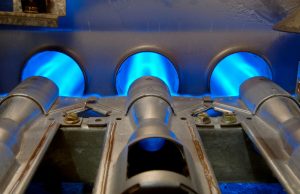 With winter winding down but temperatures still keeping our furnaces on full-force for now, it’s the perfect time to take care of any small repair needs that might have cropped up, so that you’ll know your heater is fully functional for next year. Functionality is just part of the equation, however. You want to ensure your furnace is safe, too.
With winter winding down but temperatures still keeping our furnaces on full-force for now, it’s the perfect time to take care of any small repair needs that might have cropped up, so that you’ll know your heater is fully functional for next year. Functionality is just part of the equation, however. You want to ensure your furnace is safe, too.
The only way to guarantee this is the case is to stay on top of any Salt Lake City, UT furnace repair needs that come up. Hopefully, you had maintenance done before this winter began, and if you were alerted to any service needs you took care of them right away. There is one in particular that should definitely never be delayed—and that is fixing a cracked heat exchanger.
Heat Exchanger Hazard
We don’t intend to send you into a panic if you have a gas-powered heater. After all, today’s heaters are built with your safety in mind, designed to be very durable, and even safer when professionally installed. But it’s important to realize that any natural gas-powered system has the potential to become a safety hazard. Maintenance helps prevent this from becoming a problem at all, but is still something you should be aware of even if you’re diligent about your heater care.
What Is a Heat Exchanger?
This is the component that actually enables your furnace to heat up the air that travels through your ductwork system. When the burners of the furnace come on, they generate hot combustion gas, which is collected inside the heat exchanger, which is a small metal chamber resembling the shape of a clamshell.
The hot combustion gas within the exchanger heat up the metal walls, and the blower fan of the furnace comes on, and sends air around the exchanger. Heat is picked up from the furnace wall, and then continues into the ducts. This way, combustion gasses heat the air without the gas ever coming into contact with it.
At the end of the heating process, the combustion byproducts in the heat exchanger are vented out of the system through a flue, in release the gas harmlessly into the air.
When a Heat Exchanger Cracks
Since the metal of the heat exchanger expands and contracts with the temperature fluctuations, the stress can eventually create a crack. Corrosion due to the reaction between the combustion gas and the metal (usually due to improper venting) can also weaken the metal to the point where cracks form. This is more prevalent in older systems.
These cracks are typically miniscule in nature—so small that they can be undetectable to the naked eye when the heater is off. But, the heat exchanger expands with heat, which causes any cracks to open up enough to allow combustion gasses to escape and enter your home’s airflow. This means harmful gasses are now being sent through your home.
This may all sound troublesome, but the good news is as we mentioned before, maintenance can help prevent this from happening at all, and it’s less likely to occur in a furnace that’s younger than 10 years old. But a couple warning signs that you are having this issue includes a clicking sound coming from the furnace soon after the blower shuts off, and of course—if your CO detectors go off. Be sure not to use your furnace and call for service right away if any of these indicators present themselves.
Contact us today and see why our customers say, “I Love My Design Comfort!”


